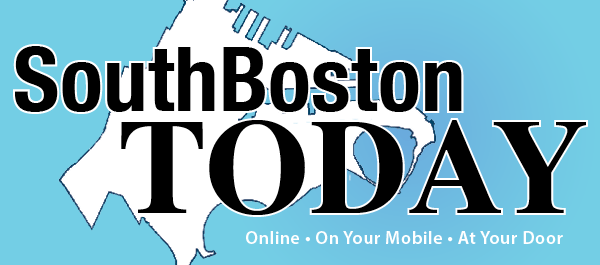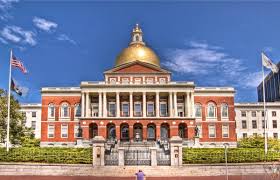The history of the South Boston neighborhood is anchored in a reputation for preserving the quality of life of its residents against often heavy odds – economic, societal and political. As the development proposal for the Boston Edison Power Plant (776 Summer Street) is about to enter its third year of public review, and after years of fighting development in general, one wonders if the neighborhood is suffering from meeting fatigue. Indicative of the challenge that residents and elected officials have in dealing with the volume of infrastructure and real estate development project-related matters, several public meetings were scheduled on November 13 at the same time but in different locations in the area, including BPDA sponsored meeting on 21-35 West 2nd Street at 50 West Broadway, a MassDOT Design Public Hearing regarding Roadway Construction Cypher Street, E Street, and Fargo Street, as well as the City Point Neighborhood Association Monthly Meeting.
Nonetheless, the residents of South Boston have proved in the past that they will not be “worn down” by a bureaucracy that is intent on “getting its way” even in the face of significant opposition. The Edison Project’s public meetings have been stretching on for almost two years and attendance at these meetings at the Tynan School had dropped off considerably after the September 2018 meeting, where community opposition was made clear by a show of hands from those in attendance.
So, first, here is the brief but detailed history of the project (not often chronicled by the public agency, unless one has the time to wade through thousands of pages of documents) and what might lie ahead as 2019 approaches.
In May 2017, after a series of public meetings, the development team, led by Redgate Capital Partners (Redgate) and Hilco Real Estate (Hilco), filed an environmental project notification form and expanded project notification form with the Executive Office of Environmental Affairs (EEA) and the Boston Planning and Development Agency (BPDA). The Project Form included 2.1 million square feet of mixed-use residential, commercial, and hotel space. The initial design called for an estimated 1500 units of housing and 987 parking spaces, with over 10,000 daily vehicle trips per day. The proposal also called for the construction of new streets, blocks and buildings, with heights reaching as high as 220 feet.
Public meetings and Impact Advisory Group (IAG) meetings occurred over the next several months to discuss the proposal and its impact on the neighborhood. Over 300 comments were submitted by residents, elected officials, and government agencies. Elected officials raised concerns around density, traffic, noting that the proposal would increase traffic and street congestion while overwhelming the neighborhood’s public transit system, and environmental contaminants.
Comments from those meetings and review of written comments on file criticized the height, density and massing of the project as out of place in the South Boston neighborhood and for providing only the bare minimum in terms of affordable housing under the City of Boston’s inclusionary development policy.
In August 2018, Redgate and Hilco filed its Draft Environmental Impact Report/Draft Project Impact Report with EEA and the BDPA in response to the comments received over the course of 2017.
Comparing the 2018 Proposal with the 2017 Proposal reveals that:
(1) the unit count dropped from 1500 units to 1344 units;
(2) buildable space decreased from 2.1 million square feet to 1.93 million square feet;
(3) maximum building heights dropped from 220 feet to 206 feet (with building heights ranging from 82 feet tall to 206 feet tall); and (4) the number of parking spaces increased from 987 spaces to 1397 spaces.
The 2018 Proposal did not provide a calculation of the daily trips generated by this new proposal (these numbers were provided in the fall at a later public meeting and estimated approximately 5,000 trips per day generated by the development). In order to address potential impacts on public transit, the newest proposal included a pilot program to operate a private bus service inbound toward South Station along the MBTA’s Number 7 bus route.
The BPDA hosted another round of IAG meetings and four public meetings during September and October for discussions on transportation, land use and design, and climate change resilience and environmental issues. During these meetings, which were chronicled by this publication, the majority of residents who spoke continued to raise concerns regarding the height, massing, and density of this newest proposal. At a packed meeting at the Tynan School with the BPDA and development team in September, elected officials asked for a show of hands on the project. The vast majority of those in attendance raised their hands in opposition to the project.
Several elected officials also criticized the failure of the 2018 Proposal to include estimated vehicle trips from the newest development proposal, pointing out that the estimates were provided to the community for the first time at the public meeting rather than in the proposal’s filing. Elected officials also questioned how the development team concluded that the new proposal would decrease the number of average trips per day from roughly 10,000 trips to approximately 5,000 trips.
Throughout these meetings, community members renewed criticisms that this new proposal failed to provide more than the bare minimum in terms of affordable housing and the City of Boston’s inclusionary development policy. Review of written comments to EEA also reveals that elected officials and state agencies were critical of the 2018 Proposal.
As reported last week, the South Boston elected delegation has been vocal in their opposition to this development, voicing concerns over the massing and density of the project, traffic congestion, and the lack of clarity surrounding the estimated vehicle trips. In a written letter, the elected officials asked the development team to provide details as to reasonable alternatives to the current proposal.
In a letter submitted to EEA, dated October 30, 2018, the Massachusetts Department of Transportation (MassDOT) stated that it opposed the mitigation proposal to provide supplemental service along the MBTA Number 7 bus route, noting that the duration of the program was not made clear. MassDOT also noted concerns that the development team had not committed to a long-term solution for additional ridership generated by the development, outside of the proposed pilot program, which MassDOT found particularly concerning given the marketing of the project as being transit-oriented.
Following review of the 2018 Proposal and written comments, EEA’s certificate noted that the development should consider additional revisions to its preferred alternative to reduce impacts, including, but not limited to, further reductions in the size of the project to reduce traffic impacts. EEA also identified the need for a revised analysis of the project’s transportation impacts that better characterizes its effect on transit and identification of alternative mitigation measures.
2019 is here and South Boston’s elected officials have been working hard and keeping close watch on the proposed redevelopment of the Boston Edison Power Plant. For over two years, they have listened to resident concerns about the project’s deficiencies regarding land use, transportation, density, and quality of life.
Are their efforts and concerns falling on deaf ears? The comment period regarding the 2018 Proposal closed in October. Despite requests from residents and elected officials, the BPDA refused to extend the comment period. Given the history of documented opposition to the project, why is the BDPA allowing this proposal to move forward? Why are significant changes in the development proposal not been forthcoming in writing?
As some fear, is the strategy to simply tire out the neighborhood with constant public meetings? Maybe the South Boston elected officials should host a meeting and invite Redgate and the BPDA to attend as guests and hear from residents and neighbors directly and clearly. Residents in general expect and are comfortable with something being built there, just not the current proposal.
In the meantime, residents are encouraged to continue to submit comments on the currently proposal by emailing them to Tim Czerwienski, the BPDA Project Manager, at tim.czerwienski@boston.gov











